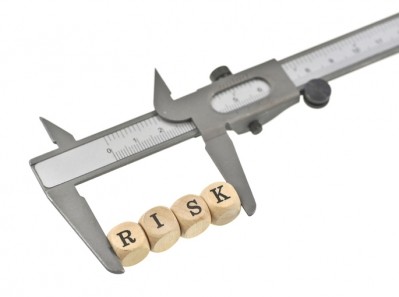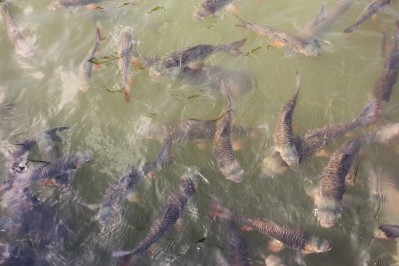What is the future of ethoxyquin in the EU?

The feed additive, used in fishmeal to ensure its safe transportation, has been on the agenda of the Standing Committee on Plants, Animals, Food and Feed Section Animal Nutrition (SCoPAFF) at its monthly meetings since December 2015.
The discussions follow the inconclusive safety assessment by the European Food Safety Authority (EFSA) on ethoxyquin (EQ) last November.
Dr Neil Auchterlonie, technical director at the marine ingredients organization, IFFO, told us the hope is the EU authorities will decide, based on the submission of additional scientific data, to uphold the authorization of EQ as a feed additive.
The IFFO, along with representatives of FEFAC and FEFANA, met with the Commission in December to discuss the EQ reauthorization. The policymarkers were told the product is widely used and it is not easy to replace at short notice.
Ethoxyquin (EQ) is currently authorised as a feed additive at levels of 150 mg/kg in complete feed in the EU and is added primarily to fishmeal as antioxidant, the benefit of this use being twofold.
It preserves fish meal and fish oil from the oxidation of highly unsaturated fatty acids including EPA (eicosapentaenoic acid) and DHA (docosahexaenoic acid), better known as omega-3 fatty acids, which are known to promote health in both animals and humans;
It prevents the spontaneous combustion of fishmeal during transport and storage - the International Maritime Organisation (IMO) requires that an antioxidant is added to fishmeal - prior to shipping – to ensure safe transportation and storage of this raw material. Only two antioxidants are permitted: EQ and butylated hydroxy toluene (BHT) and, according to the IFFO, EQ is the most widely used antioxidant at this time.
As is the case for all feed additives in the EU, EQ is undergoing a reauthorisation procedure according to Regulation (EC) No 1831/2003, the first step being a risk assessment by EFSA, which is based on a dossier introduced by a consortium of companies, ANTOXIAC, managed by FEFANA.
EFSA's opinion on EQ concluded there was an overall lack of data to assess the safety of the substance, including its metabolites, and the presence of an impurity, p-phenetidine, which is a possible mutagen [substances causing mutations in the genetic material of both animals and humans]. The Authority found, as a result of the manufacturing process, p-phenetidine remains in the feed additive.
In reaction to the EU assessor's findings in November, FEFANA said producers had already taken measures to significantly reduce the concentration of p-phenetidine in EQ, and it said the ANTOXIAC group — the FEFANA antioxidants authorization consortium — was continuing to address the critical knowledge gaps on EQ.
As regards the toxicity profile of one of the additive’s metabolites, quinone imine, as raised by EFSA, FEFANA said one further study was being performed by ANTOXIAC to complement the dataset and clarify that item.
Suspension of EQ approval
Speaking to FeedNavigator today, Arnaud Bouxin, deputy secretary general of FEFAC, said there are several options on the table now:
“One being that the Commission could decide to temporarily suspend approval for ethoxyquin for a certain period while the knowledge gaps are filled.
“ANTOXIAC has pledged to conduct studies to complete the science. Their diligence could provide the necessary information to allow EFSA to reassess the additive.
"However, due to the confidentiality around the consortia’s work, we don’t know what the timetable would be around the submission of such data to the authorities."
Impact of EQ withdrawal in EU
Meanwhile, Auchterlonie said any potential loss of availability of EQ to the fishmeal industry carries significant negative socio-economic impacts.
He said the production cost of fishmeal would increase markedly if alternative antioxidants are used and this would negatively affect the aquaculture industry in the EU along with the likely re-routing of fishmeal to alternative destinations.
An IFFO impact assessment paper on withdrawal of EQ approval in Europe from December 2015 reported that:
“Current price data indicates approximate antioxidant market prices for ethoxyquin of c. US$5; for BHT of c. US$43; for tocopherol liquid of c. US$145 per ton of fishmeal treated. Taking into account average fishmeal prices in 2015 of c. US$1,700 per ton (IFFO data), those figures represent additional costs of 2.52% and 8.53% per ton of fishmeal delivered.”
Research
The IFFO has not been idle on this issue, said the technical director. It has been actively involved in research looking to demonstrate the ongoing effectiveness of EQ at lower doses.
Fishmeal samples, he said, are being treated with two different levels of EQ, the current minimum dosage level and one below that to determine if a lower concentration of EQ will effectively protect the fishmeal in transit.
In addition, in other trials, fishmeal samples are being treated with a synthetic (BHT) and an alternative antioxidant — a blend of tocopherols and rosemary extract — to investigate the efficacy of possible alternative antioxidant options.
IMO code
“We have also been meeting with the International Maritime Organization (IMO) to discuss changes to its code should EQ approval be withdrawn in Europe. However, any such amendment process would be a long drawn out affair,” said Auchterlonie.
Fishmeal cannot be shipped without complying with the IMO codes. Any change to the regulation of the use of EQ, therefore, has marked implications for the global trade of this product, said the IFFO technical director.
In order to change the IMO codes, noted the IFFO impact assessment paper, the UN Transport for Dangerous Good committee first needs to change the UN Model Regulations for Dangerous Goods.
“The quickest possible change in the IMO codes would be 2020, so there is a long lead time.
Any change proposed to the regulations needs to take this timescale into account, as well as the associated impacts on the risk to human life in managing the risks of oxidation of the shipped product,” noted the IFFO report.

















